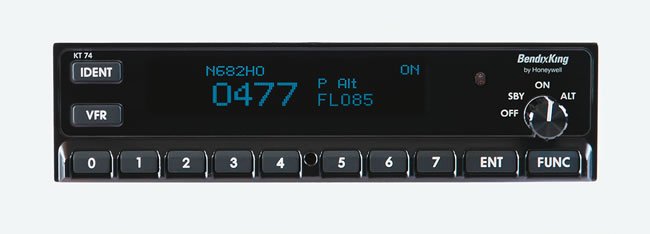Dodging ADS-B
I am disappointed that so few people (and aviation magazines) are making a stink about the lack of anonymity and privacy associated with most ADS-B solutions. If there is anyone that believes that the FAA, Customs, Homeland Security and the media wont eventually be using that ADS-B Out data for fees, monitoring, enforcement and speculative reporting, then I have a bridge to sell you in New York City.
There are ADS-B solutions that have an anonymous mode for VFR. A mode-C transponder married to the Garmin GDL88 UAT is one of them. The new Mode S ADS-B transponder solutions are not. I will not buy one of these 1090ES solutions for that reason.

On the adoption front, if the FAA really wanted pilots to embrace ADS-B Out, the mandate would accommodate portable ADS-B Out devices, at least for VFR. Pilots love portables. We gobble up headsets, portable GPS, weather receivers, transceivers, traffic detectors, iPads and of course ADS-B In devices. Portable ADS-B Out with anonymous mode would keep the cost down and utilization up not just for basic airplanes, but for all types of aircraft, including gliders, antiques, lighter-than-air, ultralights and even drones.
Rob Dant
via email
I think putting a 2500-foot AGL floor under 30-mile Class B veils would eliminate the real need for ADS-B equipage for 85 percent of small aircraft. This would gain them access to many small general aviation airports that are close to Class B airports, without any increase in danger for the Class B airspace users. Many of us can live with the 10,000-foot MSL altitude limit-which can go to 17,000 feet over the highest mountains.
This will give many of us plenty of time to install ADS-B gear if we later desire it. I have essentially stopped using Class B airports already due to the outrageous ramp fees ($40 to drop off a passenger?) at many FBOs that really only cater to the rich in their bizjets.
Arthur Thompson
Hereford, Arizona
Twin Cessna Groups
I just wanted to congratulate you on your review of the Cessna 310 in the December 2014 issue. It was an informative and entertaining read. However, I must take issue with your statement that the Cessna Pilots Association is the go-to place for twin Cessna owners.
I am currently a member of both the Cessna Pilots Association and The Twin Cessna Flyer organization (TTCF), and I read both forums from time to time. The CPA only has one forum dedicated to twin Cessnas, and that is not at all active. In comparison, the many TTCF Forums are alive and well. There is a wealth of information in both, but as a T303 owner, I have to say the TTCF is more relevant to me.
Adam Crowther
via email
Choosing a Floatplane
I was recently in the market for an amphib, and as your floatplane article in the December 2014 issue noted, each plane has its tradeoffs.
I was looking for a plane that had decent load capability (four people) and decent speed. While a Cessna 206, 185 or a Lake Renegade can carry four people and some luggage, cruise speed is somewhere in the neighborhood of 110 knots. Thats nothing to write home about. Plus the purchase price and fuel burn would be way over my budget. Moreover, I plan on operating in salt water and an aluminum plane, no matter how we’ll cared for, will have constant corrosion problems.
While doing my research, I stumbled across and bought the Seawind 3000. Not only does it really cruise at 150 knots and burns 12 GPH, it has a useful load of just under 1000 pounds. Behind the rear seats is a long cargo hold thats great for carrying skis, fishing poles or golf clubs.
Some Seawind owners even fold the rear seats forward and camp in the plane, using the cargo hold to extend the legs while sleeping.
I can carry four adults and four hours of fuel. Filling the 110-gallon tanks would only work if there are two people onboard. I normally carry about 60 gallons-plenty for four hours of flight-including reserves. The plane is made of composite, so salt water will be much less of a concern.
There are about 80 of them flying in the U.S. and street prices for a good condition model are between $150,000-$180,000. The majority of those for sale seem to have less than 500 hours on them and are powered by a 300-HP Lycoming IO-540.
The Seawind company has been taken over and is attempting to sell a certified version, called the Seawind 300. It claims to be near the end of the testing phase. The Seawind 3000 is a kit thats no longer in production, but if you get serious about a Seawind, contact Planemakers in Florida (www.planemakers.com). It built 20 of them and does prepurchase inspections.
Allen Low
San Francisco, California





